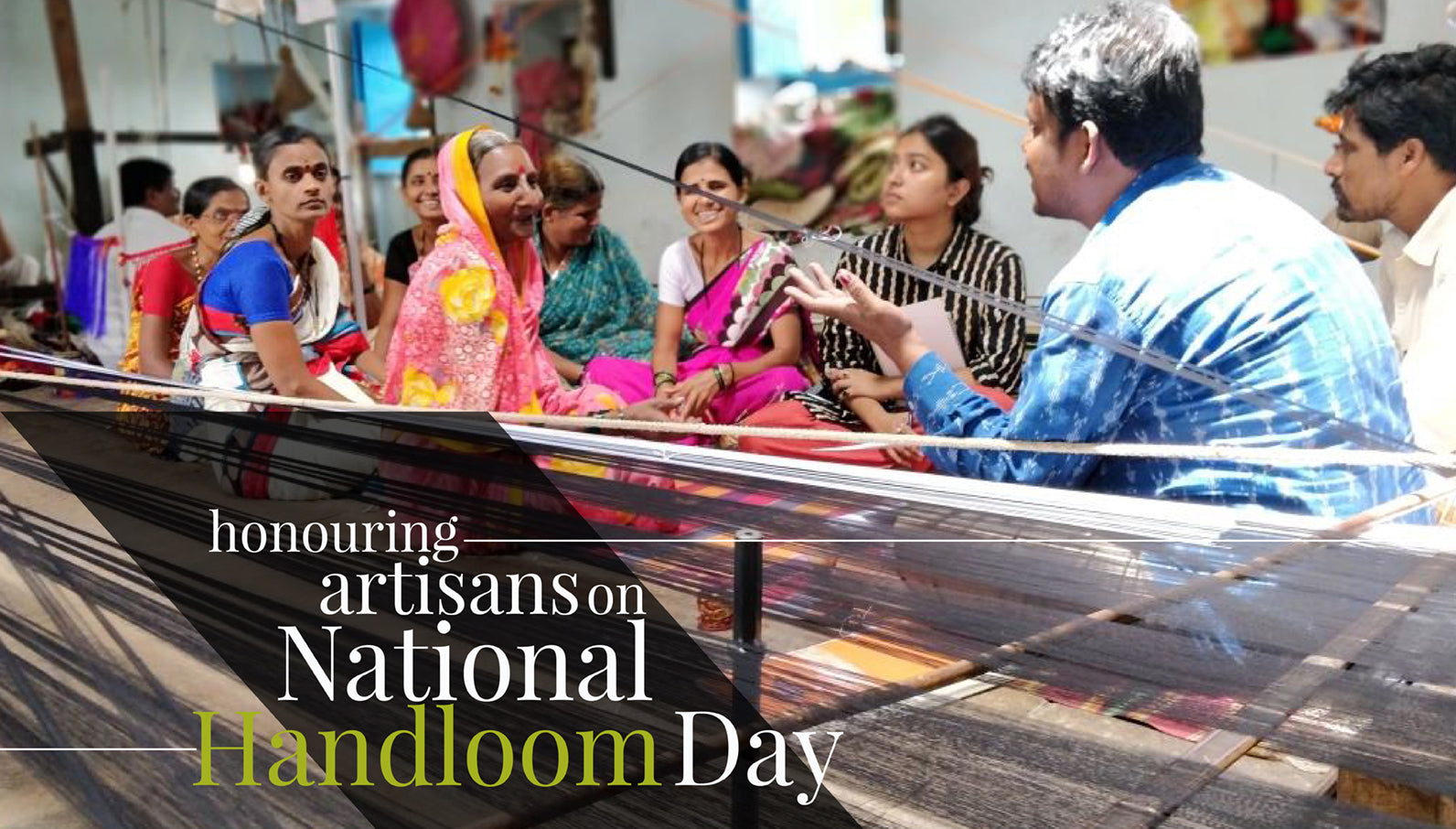It could be said that the story of the handloom is woven into India's history.
The story begins in antiquity with woven and dyed cotton fabrics excavated in the ruins of Mohenjo Daro, fragments of Indian handlooms discovered in Egypt and references to weaving styles found in the Vedas.
The handloom industry survived for centuries, passing down skills from generation to generation, surviving to this day. It's no surprise that India is currently the producer of 95% of the world's handwoven fabrics.
It has been a tumultuous history, however. With the advent of British rule, textiles began to take on a political significance. The colonial practice of extracting raw materials produced in India, weaving fabrics at the mills in England and consequently selling it back in India was devastating to the local economy.
Indians began to rebel against this colonial practice. On August 7th, 1905, a meeting was convened in Bengal, deciding that foreign cloth must be boycotted. And thus, the Swadeshi Movement was born.
It went on to become one of the symbols of Indian resistance with handloom fabrics adopted as the preferred attire and the 'charkha' used on the flag.
The birth of the Swadeshi Movement was a momentous event in India's handloom story.
In 2015, the government of India declared that August 7th would be celebrated as the National Handloom Day, officially supporting the handloom industry.
The previous year saw the launch of the GoCoop marketplace where artisans could sell their products directly to customers, eliminating the need for middlemen, ensuring that the profits reached the artisans directly. The campaign Go Swadeshi was launched by GoCoop in August 2014 to celebrate the traditional arts and crafts of India.
Go Swadeshi has been reaching out directly to customers through exhibitions and sales in different cities apart from GoCoop’s online marketplace. Artisans and weavers showcase their authentic handwoven products directly to consumers and also share their success stories.
On National Handloom Day, artisans and weavers are awarded for their contribution to the development of the handloom industry.
Explore a range of Swadeshi styles with Ilkal, Kondi Chikki, Chikki Paras sarees from Sri Shakambari Weaver's Co-operatives Ltd., Honoured with the National Award 1993-94,

Link: https://gocoop.com
Batik dress materials, sarees, dupattas and more from Mohamad Wasim of Awantika Dyeing & Hand Printing, winner of the State Award in 2015,

Link: https://gocoop.com
Maheshwari sarees, salwars, dupattas and stoles from Rajesh Shravnekar of Shravnekar Handloom, winner of the State Award 2012,

Link: https://gocoop.com
And Bengal handloom sarees from Bappaditya Khan & Prataditya Khan, winners of the National Award in 2011.

Link: https://gocoop.com
Going Swadeshi
Go Swadeshi gives one a chance to live sustainably, to flaunt traditions, to go green. Because handlooms aren’t just a cultural statement but also a fashion statement.
It’s time to Go Swadeshi.






Leave a comment